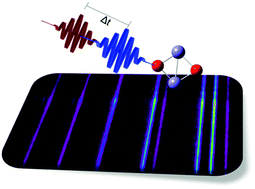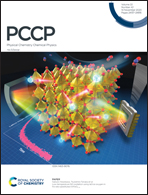Ultrafast pump–probe spectroscopy of neutral FenOm clusters (n, m < 16)†
Abstract
Neutral iron oxide clusters (FenOm, n, m ≤ 16) are produced in a laser vaporization source using O2 gas seeded in He. The neutral clusters are ionized with a sequence of femtosecond laser pulses and detected using time-of-flight mass spectrometry. Small clusters are confirmed to be most prominent in the stoichiometric (n = m) distribution, with m = n + 1 clusters observed above n = 4. Pump–probe spectroscopy is employed to study the dynamics of an electron transfer from an oxygen orbital to an iron nonbonding orbital of iron oxide clusters that is driven by absorption of a 400 nm photon. A bifurcation of the initial wavepacket occurs, where a femtosecond component is attributed to electron relaxation assisted through internuclear vibrational relaxation and high density of states, and a slow relaxation shows the formation of a bound excited state. The lifetime and relative ratio of the two pathways depend on both the cluster size and iron oxidation state. The femtosecond lifetime decreases with increased cluster size until a saturation timescale is achieved at n > 5. The relative population of the long-lived excited state decreases with cluster size and suggests that the excited electron remains on the Fe atom for >20 ps.



 Please wait while we load your content...
Please wait while we load your content...
